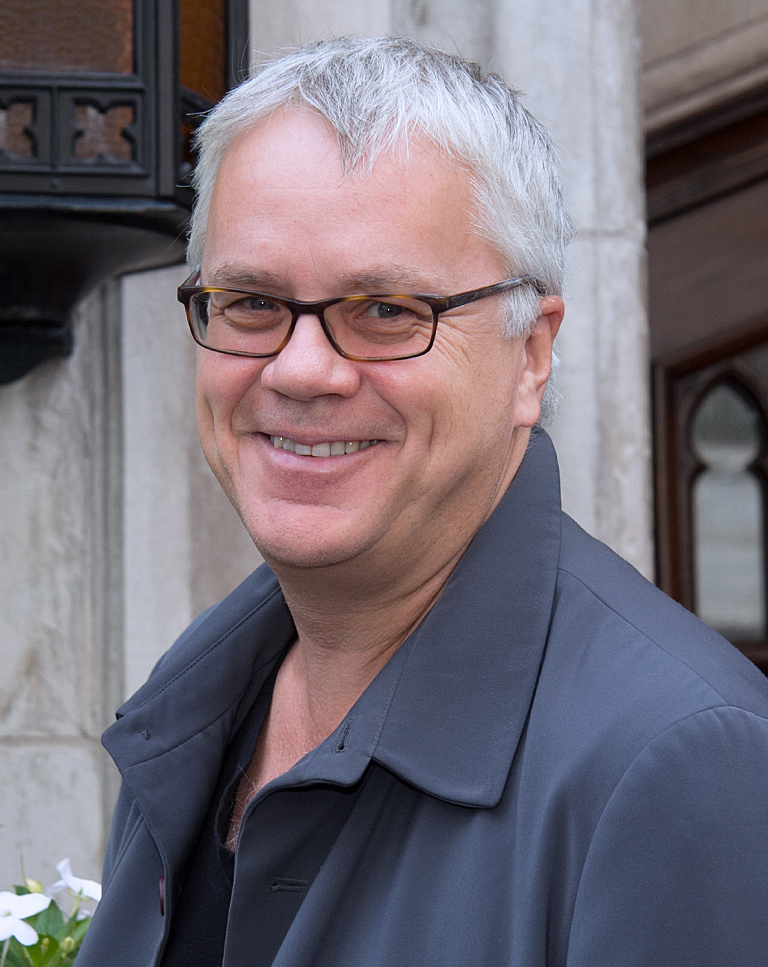BY CLAUDE SOLNIK | Back in the 1970s, Crystal Field cast an adolescent Tim Robbins as gang member in a street theater play in which George Bartenieff played a kind of junkie mystic. Robbins recently looked back on those days as among his first steps on stage and a time when he truly discovered theater.
“At the time, he seemed to possess the answers — aside from his incredible talent as an actor,” Robbins said. “I was a 13-year-old, looking at that and wanting to be that.”
Robbins, via a video tribute shown at a recent memorial to Bartenieff at Theater for the New City in the East Village, talked about his mentor’s grace and wisdom, as Bartenieff, Crystal Field and TNC steered him to theater and gave him a stage.
“He was a leader and a teacher. And he was generous and funny, a great actor that saw the worth in everyone, even a novice 13-year-old like me,” Robbins said via video. “He kind of took the actors with him that were in the cast and encouraged us all to have fun with the subversive street theater that we were doing.”
Robbins said Bartenieff “inspired me and others to live his dream, to create outside of the norm, to tell stories that talk about now, this moment.”
“George meant the world to me as a young actor. I wanted to be George Bartenieff,” Robbins said. “Crystal, Alex [George and Crystal’s son], I know it’s been a long time since those early days in the Seventies. I want you to know those times still live in my heart very strongly.”
Among TNC’s most famous alumni, Robbins spoke in the video clip about how he truly discovered acting on TNC stages where George and Crystal were busy “creating theater that expanded the reality of what theater could be.”
“I spent a lot of time at Theater for the New City as a young teen. George and Crystal were de facto parents to me, in a way,” Robbins said. “I’m indebted to them forever for the kindness and guidance that Crystal and George showed me as a young actor.”
Robbins remembers TNC as not just presenting theater, but literally testing its limits, helping define ways that theater could transform.
“Doing theater that pushed the boundaries and living a life in defiance of authority were not things encouraged by the powerful forces in our lives,” Robbins noted. “This theater company was a collection of rough, determined, independently minded, radical people. … It was chaotic, anarchic. It was challenging,” he said. “It wasn’t what you call today a ‘safe space.'”
Robbins remembered the aforementioned street theater performance in the summer of 1973, which, he said, “got tense” when George Bartenieff, as part of the show, snatched a character’s purse and ran off into the audience.
“My character was supposed to chase him,” Robbins said. “On this particular day, there was an audience member in an altered state who thought this was real. He started to chase George with all the intensity and vengeance of a vigilante. George ran faster than I’ve ever seen him run and got backstage to safety.”
They finally convinced the agitated man that this was just a play. But rather than being disturbed, Bartenieff enjoyed a moment when theater was reality, not fantasy, although he always made it part of his reality.
“I remember George’s smile backstage that day as he helped defuse that situation. It was the smile of an artist amused by the transformation of that moment,” Robbins said. “A reality had been created that made the pretend real and momentarily transported one audience member to a different reality. And that had created an incredibly different type of theater.”
Staring out from the screen, projected in TNC’s Johnson Theater, Robbins seemed to get closer to the audience. And for a moment, it truly felt as if no time had passed.
In a final heartfelt sendoff to George Bartenieff, Robbins said, “Thank you for being a friend, an artistic collaborator and a partner — not only as a great artist, but a great man.”


Be First to Comment